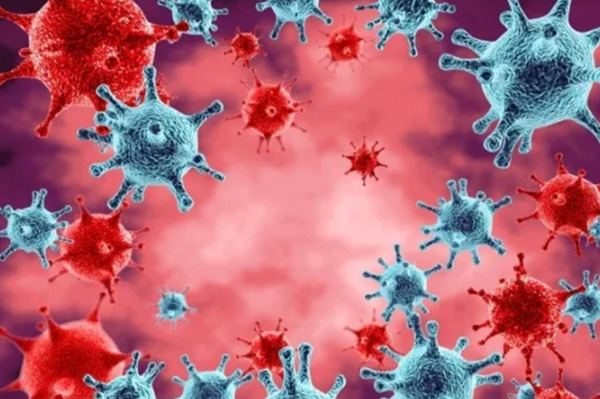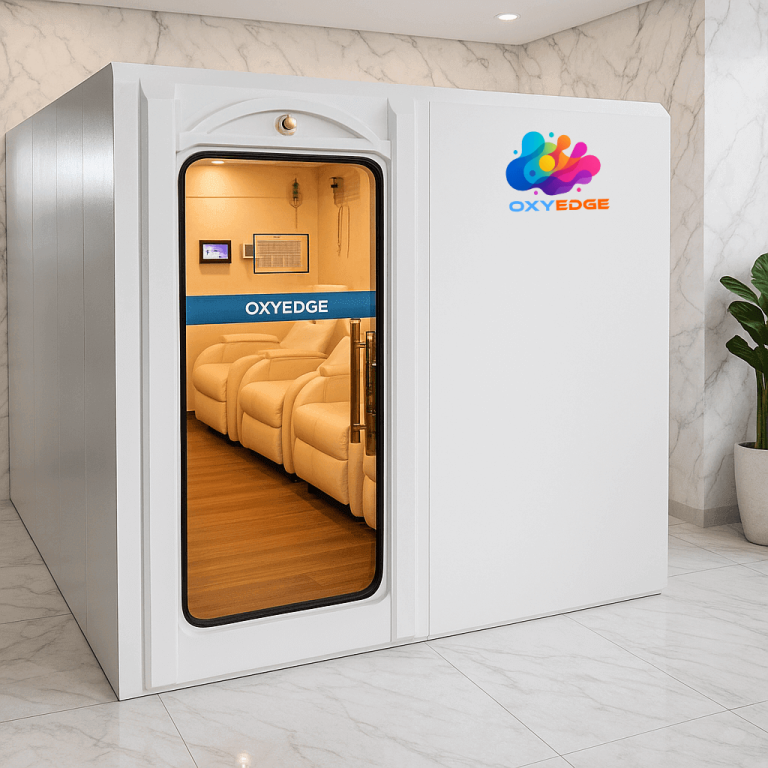Science-Backed Wellness for Healthier Living
Hyperbaric For Sale
How Hyperbaric Oxygen Therapy Works
Mild Hyperbaric Oxygen Therapy (mHBOT) is a therapy that involves breathing pure oxygen in a specially designed pressurized chamber. The increased pressure allows the lungs to absorb significantly more oxygen than under normal conditions. This surge of oxygen enhances the body’s natural healing processes and supports faster recovery.
mHBOT is a safe, non-invasive, non-pharmaceutical wellness modality suitable for home and wellness-center use. While prescriptions are not universally required for mild, non-medical devices, Hyperbaric Health requires a prescription before purchase to ensure each buyer is cleared for safe use. This screening helps identify any absolute contraindications and supports quality, safety-first session planning. If you don’t have a prescriber, we can connect you with an independent provider for an evaluation. Safety first, always!
Why Choose Us
With decades of expertise rooted in the commercial diving industry and wellness center operations, Hyperbaric Health brings unmatched experience to the field of hyperbaric oxygen therapy. Our nationwide team includes certified hyperbaric technicians, certified chamber operators, safety directors, and hyperbaric medically trained doctors and nurses specializing in hyperbarics.
We are proud to deliver high-quality chambers, top-notch financing, and professional, reliable service and support for hyperbaric chambers across the country.
Featured Products
Advanced Technology: Our hyperbaric chambers are equipped with cutting-edge technology systems that enhance safety and efficiency during treatment sessions. Each chamber is designed to provide the best session, ensuring optimal pressure levels are maintained for maximum therapeutic benefit. This technology significantly reduces the risk associated with hyperbaric therapy and allows us to provide a safer healing environment.
Why Shop Hyperbaric Chambers with Us
Discover the OxyEdge™ Advantage in Hyperbaric Therapy
At Hyperbaric Health, we know choosing the right hyperbaric chamber can feel overwhelming. That’s why we simplify the process—by aligning your needs with the most advanced chamber technology on the market: OxyEdge™.
OxyEdge™ hyperbaric chambers offer a variety of wellness-focused options for personal use, recovery studios, clinical environments, and performance centers:
-
Soft-shell chambers: up to 1.5 ATA — comfortable, convenient, and compact for home and wellness settings.
-
Hard-shell chambers: adjustable up to 2.0 ATA, allowing each session to be tailored to individual comfort and wellness goals. Pressure settings are easily adjusted before or during operation.
- Multi-user chambers: 2-person chambers can go up to 2.0 ATA.
Larger chambers, 4-8 people, operate at 1.5 ATA due to overall volume and pressurization.
Pressure equalization in multi-user sessions, all participants must equalize to the target pressure. If someone cannot equalize comfortably, the protocol is to pause or reduce pressure so the entire group remains within comfort and safety guidelines.
We don’t stop at sales. Our expert support team is here before, during, and after your purchase to answer questions, guide your selection, and ensure long-term success with your chamber. We also provide hands-on training for individuals and staff, so you’re confident using your system from day one.
Clients across the country report faster recovery, improved energy, and a noticeable boost in well-being with OxyEdge™ chambers. This aligns with research showing that hyperbaric oxygen therapy (HBOT) enhances cellular repair, reduces inflammation, and accelerates healing (National Library of Medicine, 2020).
We invite you to explore real testimonials, learn about our exclusive OxyEdge™ technology, and discover why more people are turning to Hyperbaric Health for cutting-edge solutions in wellness and recovery.
What HBOT Helps

Athletic Recovery
Whether you’re a professional athlete, weekend warrior, or simply staying active as you age, hyperbaric oxygen therapy helps your body recharge and recover faster. By increasing oxygen availability, HBOT supports muscle repair, reduces post-activity fatigue, and promotes overall resilience—so you can get back to doing what you love, while feeling your best.

Adjunctive Cancer Treatments
Hyperbaric oxygen therapy is often used as a complementary wellness approach alongside conventional cancer treatments. By increasing oxygen delivery throughout the body, HBOT can help support natural recovery processes, reduce inflammation, and promote tissue health—especially during or after demanding therapies such as radiation or chemotherapy.

Chronic Viruses & Infections
Oxygen plays a vital role in the body’s natural defense and repair systems. HBOT enhances oxygen delivery throughout the body, creating an environment that supports cellular repair, immune response, and overall resilience. Chronic viruses and bacterial infections struggle to thrive in highly oxygenated tissues, which is why it is used as a complementary therapy.

Neurological Support
HBOT gently raises dissolved oxygen in the bloodstream, supporting cellular energy (ATP), circulation, and tissue oxygenation across the brain and peripheral nerves. Many people integrate HBOT with their existing care to promote clarity and focus, encourage comfort in irritated nerves, and support the body’s natural recovery and neuro-adaptation.

Anti-Aging
Hyperbaric sessions provide extra oxygen under gentle pressure to support daily energy, recovery, and skin vitality. Structured clinical studies have been reported to show positive markers associated with healthy aging, including the reduction and replacement of older, damaged cells, stem-cell generation, and telomere length.

Pre-Post Surgery
By increasing oxygen in tissues, HBOT can support comfort, help reduce normal post-procedure downtime, and encourage healthy wound healing. Oxygen-rich environments support tissue recovery and microbial behavior. HBOT is a complementary wellness approach, and treatments should be coordinated with your surgeon’s guidance.
Looking for hyperbaric chambers for sale?
Shop the full range: soft-shell (to 1.5 ATA), hard-shell (adjustable to 2.0 ATA), and multi-person wellness chambers.
-
Built to last: professional-grade materials, quiet compressors, and smart safety features for everyday reliability.
-
Comfort-first design: spacious interiors, clear sightlines, and easy controls for smooth, stress-free sessions.
-
Performance you can feel: consistent pressure and oxygen delivery to support recovery, energy, and resilience.
-
Expert guidance, end to end: sizing, installation, training, and session best-practices—so you buy with confidence.
-
Flexible ownership: financing options, warranty coverage, and ongoing support to keep you up and running.
-
For home & centers: ideal for personal wellness rooms, recovery studios, and performance facilities.
Take control of your recovery. Choose OxyEdge™ — exclusively at Hyperbaric Health.
Looking for improved wellness with HBOT?
You’re in the right place! Our shop offers a wide selection of hyperbaric chambers perfect for home and clinic use.
-
Right-fit guidance: We help you choose the optimal chamber for your space, workflow, and budget—so setup is straightforward and day-to-day use feels natural.
-
Smart onboarding, lasting confidence: Clear training resources and best-practice guidance (comfort, safety, and legal basics) so you and your team can run sessions independently.
-
Support that respects your time: Helpful documentation, quick answers when needed, and no-nonsense warranty—everything you need to stay on track without hand-holding.
-
Ownership made simple:
Transparent pricing, financing options, and quality-first construction using premium materials and proven components for reliable, long service life.
Frequently Asked Questions
Our chambers are precision-built in ISO 13485/ISO 9001–certified facilities and use high-spec components selected to meet U.S. expectations for safety and reliability. Every unit is pressure-tested at the factory prior to shipment, with documented QC. While formal U.S. testing/certification isn’t required for mild wellness chambers, our designs are built to ASME PVHO-1 safety principles and produced under rigorous quality systems. Final configuration, customer support, warranty, and nationwide logistics are handled from our U.S. headquarters in Virginia.
Hyperbaric Oxygen Therapy (HBOT) is a treatment that involves breathing pure oxygen inside a pressurized chamber. This process increases oxygen levels in the body’s tissues, helping to accelerate recovery, reduce inflammation, and support overall wellness.
OxyEdge™ chambers are engineered for comfort, safety, and lasting performance. Each unit is built to order with premium materials and refined interiors, then tailored to your space and routine. Customization options include electric massaging recliners, red-light panels, integrated entertainment, and fold-away tables ideal for laptops or note-taking.
Our proprietary OxyEdge standards set a high bar for reliability and user experience. We continuously improve our designs as technologies evolve and offer industry-leading warranty options. Every chamber is configured for home and professional wellness environments with an emphasis on easy operation, quiet performance, and everyday comfort.
Your comfort, usability, and—above all—your health and wellness are at the core of everything we build.
HBOT is widely used by:
-
Health & wellness enthusiasts looking to support energy, sleep, and recovery
-
Athletes & active individuals aiming to bounce back faster between sessions
-
Longevity-focused buyers interested in aging well and feeling their best
-
People seeking cognitive & nerve support (focus, clarity, calm, post-injury recovery) alongside their care routine
-
Studios, gyms, and wellness centers expanding recovery services with a premium offering
Note: OxyEdge™ chambers are wellness devices and are not intended to diagnose, treat, cure, or prevent any disease. Always follow your own provider’s guidance if you’re under medical care.
Short answer: For mild hyperbaric wellness (mHBOT), a prescription isn’t universally required by law—but Hyperbaric Health requires a prescription for chamber purchases. We do this to prioritize safety, proper screening, and best-practice use.
Why we require one – Safety First!
-
In the U.S., oxygen can be regulated as a drug; medical HBOT uses 100% oxygen.
-
OxyEdge mHBOT chambers usesan oxygen concentrator (~93% ±3% O₂), which sits in a regulatory gray area.
-
To keep things safe and consistent, we err on the side of medical prudence: a brief evaluation and prescription confirm you’re cleared for use and help catch absolute contraindications.
-
We’ll connect you with an independent telehealth provider if you don’t already have one, and provide usage guidance for comfort, safety, and legal compliance.
Most chambers have a lead time of 15-20 days. And shipping can be from 10 to 30 days depending on the model and customization. Once delivered, our team can schedule professional installation, which is generally fast.
We stand behind our equipment with industry-leading warranties:
-
5 years – First year we pay for parts and shipping; years 2 – 5 we pay for the parts, and the client pays for the shipping.
-
Extended warranty options are also available.
Yes. We offer multiple financing solutions:
-
Affirm for personal financing
-
North Star Leasing for startups and clinics
-
Approve for established businesses
This makes owning a chamber accessible whether you’re an individual, a clinic, or a wellness center.
Simply contact our team for a consultation. We’ll help you select the right chamber, explain financing options, and walk you through installation and training so you can start experiencing the benefits of HBOT with confidence.






